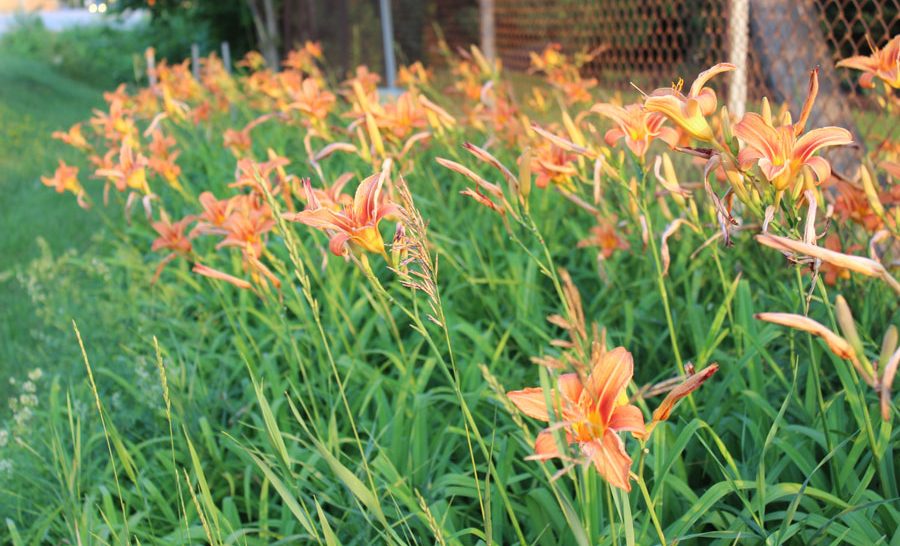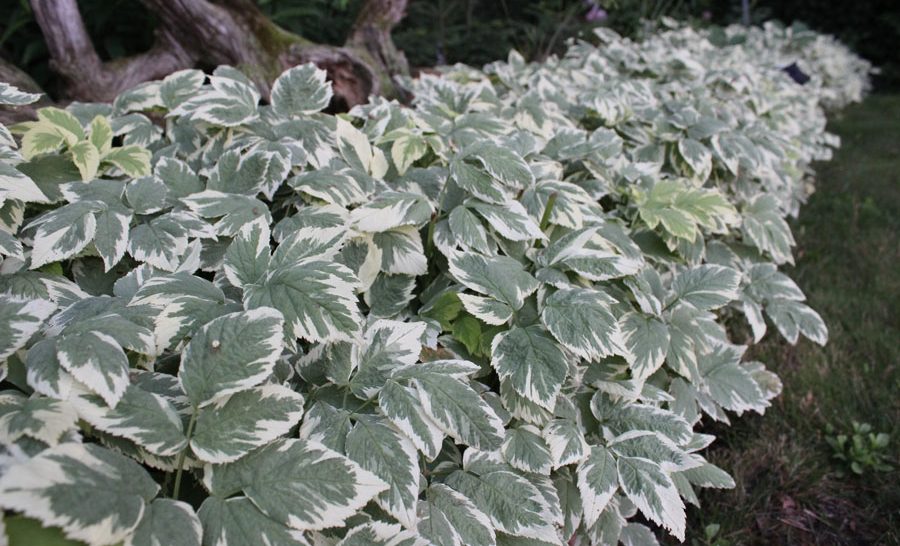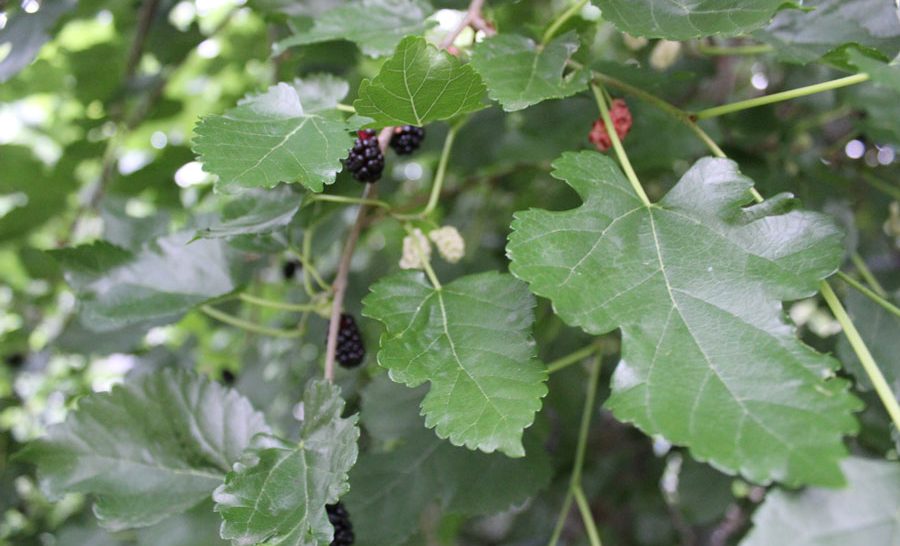WELLINGTON COUNTY – Summer is in full swing with flowers blooming bountifully.
Orange daylilies fill ditches. White blooms of lily-of-the-valley send sweet scents into the air. Variegated goutweed spreads through gardens and woodlands. Creeping purple bellflowers sway in the wind and glossy periwinkle leaves carpet the ground.
Though their beauty is alluring, experts recommend banishing these plants, pronto.
Invasive, harmful
Why? They’re invasive, meaning they harm the environment, the economy and/or society, including human health.
Invasive species displace native plants that are food sources for insects and animals. They impact crop production by invading farm fields and damage infrastructure such as buildings, sidewalks and roads.
Most invasive plants were introduced intentionally, as ornamental flowers and agricultural crops. But they escape gardens and farm fields, spreading through forests and wetlands.

Master gardener and founder of the Canadian Coalition for Invasive Plant Regulation Cathy Kavassalis. Submitted photo
“We need to wake up to the potential impact of invasive plants,” said Cathy Kavassalis, a master gardener and founder of the Canadian Coalition for Invasive Plant Regulation.
It’s common for people to feel the plants in their gardens aren’t a problem because they’re under control, she said. But the seeds spread far and wide, invading natural spaces without gardeners’ knowledge.
“People just don’t know,” she said.
“Invasive plants displace all the native plants,” decreasing biodiversity and disrupting a fundamental food web, Kavassalis said.
“There is so much at stake with loss of native diversity.”
Many invasives are not food for native insects or birds, so when they replace native plants populations decline.
‘Webs of life are collapsing’
“Insects decline at nine per cent per decade,” she said, referring to an April 2020 analysis in the journal Science.
North America has lost 2.9 billion birds since 1970, according to another study published in Science.
“That’s one in four birds gone,” Kavassalis said.
“It’s all part of a big picture that I think as gardeners we have not recognized until recently.”
The economic impact is substantial, with invasive plants costing Canadian agriculture an estimated $2.2 billion annually, according to Environment Canada.
The impact is also cultural and spiritual, especially when invasives displace plants important to Indigenous people, Kavassalis said.

Master gardener and founder of the Guelph Gardeners Facebook group, Rosemary Fernandes-Walker. Submitted photo
Rosemary Fernandes-Walker, a master gardener and founder of the Guelph Gardeners Facebook group, said she wishes more people knew which plants are invasive, “and that they will negatively affect other plant growth and the environment as well.”
People spread awareness about invasive plants in Fernandes-Walker’s Facebook group, which has almost 5,000 members and can be found at www.facebook.com/groups/guelphgardeners.
Catherine Goddard, co-founder of Guelph’s Tree Trust and long-term member of the North American Native Plant Association, said “diversity is key to survival for all species, including humans.” She recommends people “create habitats instead of gardens.”
Kavassalis, Fernandes-Walker and Goddard each admitted to growing invasive species before they knew not to.
“Many of us are late to this game,” Kavassalis said.
“I spread a lot of these invasive plants because they were easy to grow. In my senior years, I am trying to do some reparations and correct some of the damage we gardeners have done … so my grandchild and other grandchildren don’t have this terrible burden we have left behind.”
Removing invasives
There are “no simple solutions” for removing invasive plants, Kavassalis said – “that’s why they are invasive. If they were easy to remove they wouldn’t be on the invasive plant list.
“They can all be removed, it just takes patience and persistence. And if you can’t get rid of it, just make sure it can’t reproduce” by cutting it and containing it with barriers in the soil, she recommends.
“The Ontario Invasive Plant Council (OIPC) has fantastic best practices” for different plants, Kavassalis said, adding there is “no one-size-fits-all approach.
These best practices and other resources are online at www.ontarioinvasiveplants.ca/resources.
“Some you can solarize, some you can dig up, some you can cut. For some, you have to use herbicides,” she said – but for some gardeners, like Goddard, herbicides are never the answer.
Goddard said when removal isn’t possible, mowing or weed-whacking is better than nothing, because it limits spread by stopping the plant from going to seed.

Co-founder of Guelph’s Tree Trust and long-term member of the North American Native Plant Association Catherine Goddard. Photo by Robin George.
Increased regulation
Kavassalis said many invasive plants are sold in Ontario nurseries, because “we just don’t have a system that’s very good at prohibiting the sale of these things.”
She said the federal government passes the issue off to the provinces, the provinces pass it to the municipalities, and the municipalities pass it to homeowners, meaning the problem is left to those “least capable of addressing the big picture.”
Kavassalis started the Canadian Coalition for Invasive Plant Regulation to raise awareness and advocate for stronger government regulation, such as labelling of invasive plants and prohibition of sales.
“We need to put a system in place that helps the public,” she said. That way, gardeners “can purchase with confidence [their] plants are not going to do harm.”
She said Canada should implement a risk-assessment system before plants are imported, as Australia and New Zealand have.
Details about the Canadian Coalition for Invasive Plant regulation are available at www.ccipr.ca.










